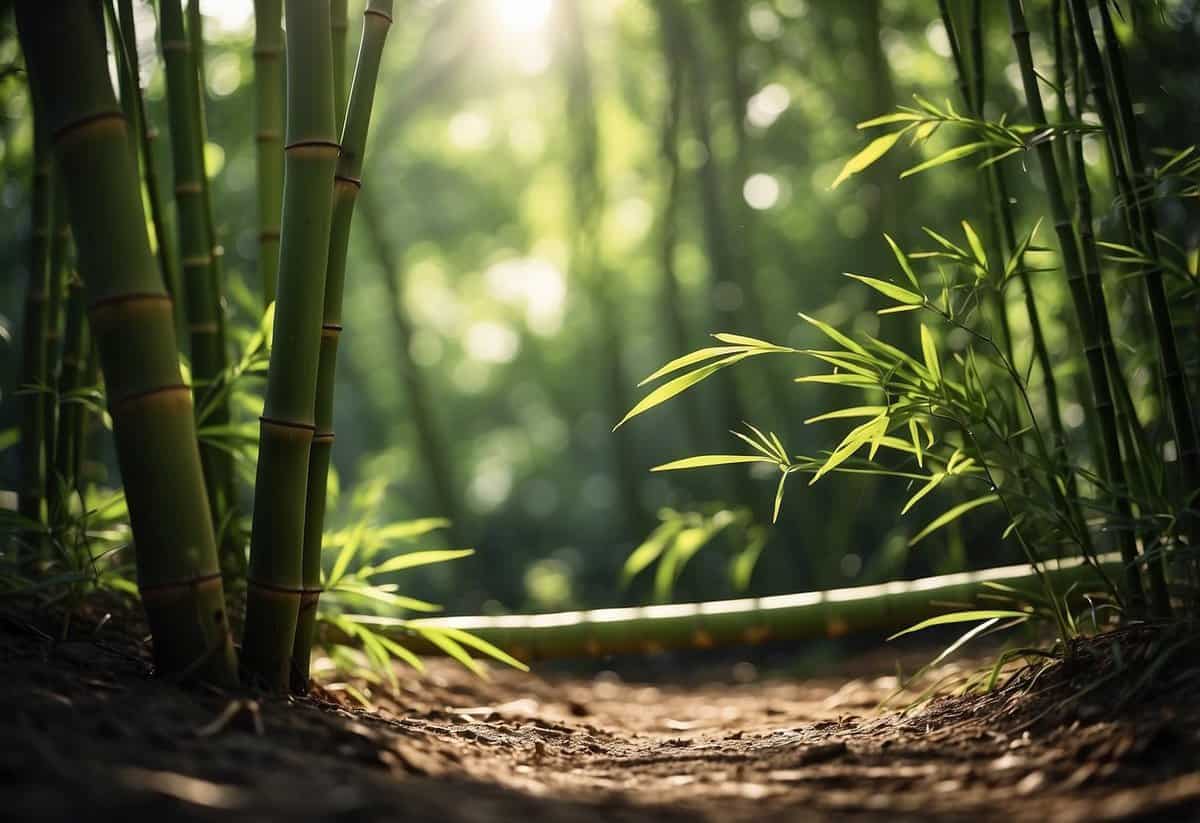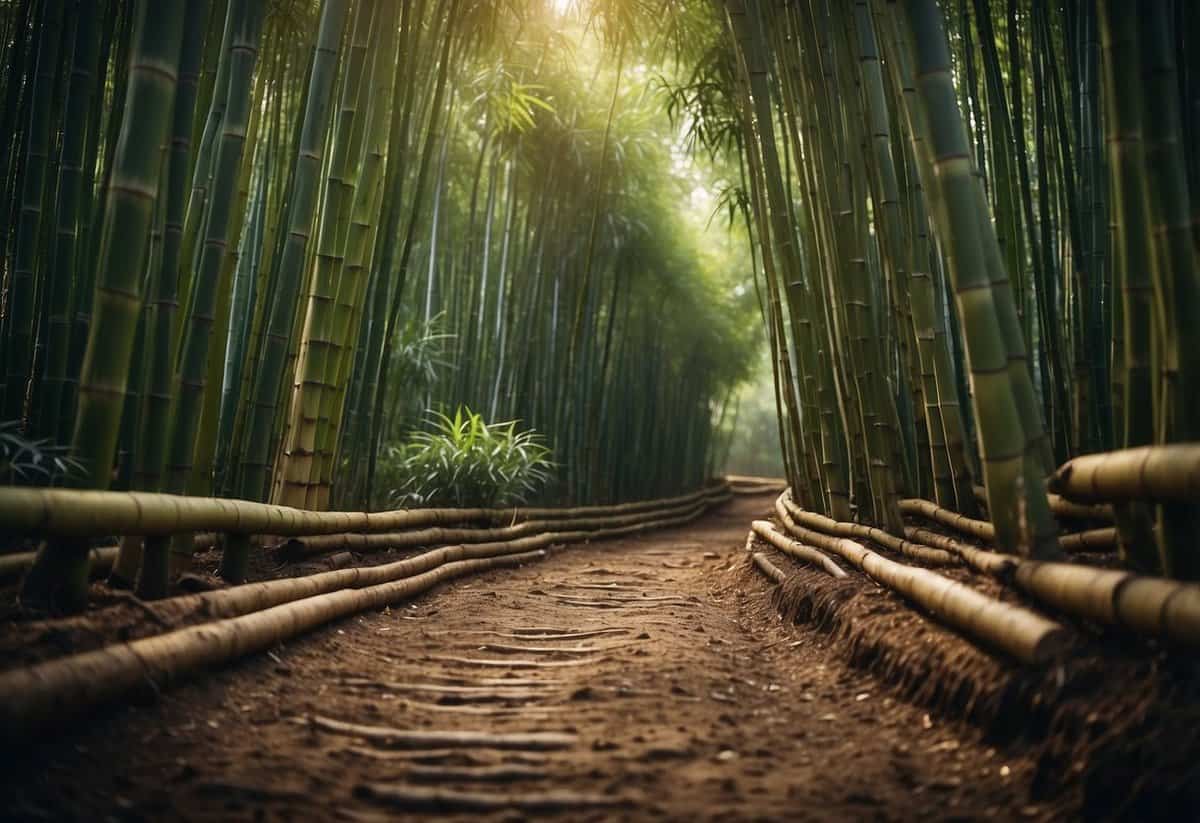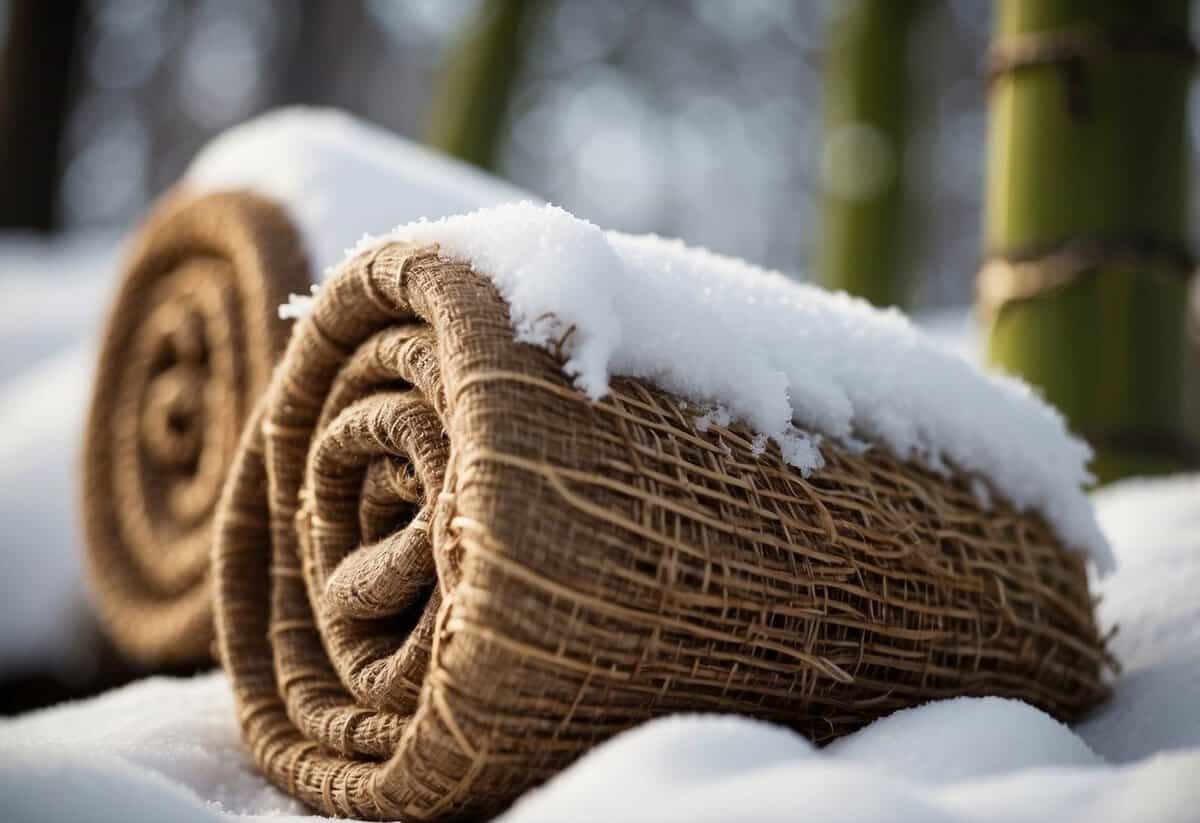Bamboo Garden Tips: Easy Ways to Grow a Thriving Bamboo Oasis
Adding bamboo to your garden can create a lush, serene oasis that’s both beautiful and functional. Whether you’re aiming for a tropical vibe or simply want a fast-growing privacy screen, bamboo offers a versatile solution that enhances the aesthetics and usability of your outdoor space.

What are the essential tips to grow and care for bamboo successfully? Understanding the basics can make the difference between a thriving bamboo garden and one that struggles to stay green. Whether you’re a seasoned gardener or just starting out, knowing how to properly plant, water, and maintain bamboo can lead to impressive results.
1) Watering Schedule

To ensure your bamboo thrives, it’s important to maintain a good watering schedule. Water your bamboo deeply until water runs out of the pot’s bottom.
Let the top inch of soil dry out before watering again. Be careful not to let the plant stand in water to prevent root rot.
For newly planted bamboo, water twice a week. Once established, reduce to once every 7-10 days. Adjust based on weather conditions like heat or wind.
2) Ideal Soil Types

Bamboo loves well-draining soil rich in organic matter. Loam soil, a mix of sand, silt, and clay, is perfect for bamboo because it provides good drainage and retains moisture.
Slightly acidic soil with a pH range of 5.5-6.5 is best. Loose, aerated soil helps bamboo roots to spread and grow easily, preventing stunted growth.
If the soil is too compact, it can restrict root growth and harm your bamboo plant. Using loam soil or enhancing your soil with organic matter can make a big difference. For extra drainage, consider adding rocks or crocks at the bottom of the planting pot.
3) Mulching Techniques

Mulching bamboo helps keep the plants healthy by retaining moisture. Use organic mulch like straw, bark, or leaves. A thickness of 7-10 cm up to the stems works well.
Mulch also acts as an insulator. It protects roots from freeze-thaw cycles. Studies show mulch can keep soil temperatures 5-10°F warmer than non-mulched soil.
Bamboo root systems are shallow. Heavy mulching is recommended in areas with prolonged cold or freezing temperatures. This helps prevent the roots from freezing.
4) Pruning Tips

Start by using sharp tools like pruning shears or loppers. This helps make clean cuts.
Focus on cutting dead, damaged, or weak stalks first. Remove these at the base for best results.
Trim any crossing or crowded branches to improve air circulation and growth.
If your bamboo becomes too wide, cut outer culms back to ground level for a neat appearance.
5) Pest Control Methods

To keep your bamboo garden healthy, you need to manage pests effectively. One popular method is using neem oil. Dilute it in water and spray it directly on the affected areas to tackle mites and beetles.
Another option is pyrethrin insecticides. These natural products work well against various pests. Remember, early detection is key, so inspect your bamboo regularly. If you spot any issues, act quickly to protect your plants.
6) Fertilization Routine

To keep your bamboo healthy, you should fertilize it regularly. Start with a soil test to check nutrient levels and pH, as bamboo likes slightly acidic to neutral soil.
Use a balanced fertilizer with equal amounts of nitrogen, phosphorus, and potassium. Apply it in early spring for the best results.
An alternative option is to use compost. Spread a 1- to 2-inch layer around your bamboo in spring. This slow-release method will nourish the plants all season long. Regular monitoring will help you adjust your fertilization routine as needed.
7) Shading Solutions

Bamboo can thrive in various light conditions, including shade. Some species like Fargesia robusta do well in partial shade and cooler conditions.
If your garden has full shade, plan for 2-4 hours of dappled sunlight. In these areas, bamboo growth is slower, but it’s possible with commitment. Opt for a north-facing yard if needed.
Ensure your bamboo gets enough water and is planted in a spot where it can stay permanently. These steps help your shady bamboo thrive.
8) Winter Protection

Mulching helps insulate the soil. Spread a thick layer of mulch around the base of bamboo plants. It retains moisture and keeps the roots warm during freezing temperatures. This helps bamboo survive harsh winter conditions.
Choose a sheltered spot. Plant bamboo away from north winter winds. Buildings or trees can provide extra protection from the cold bamboo winter care.
For container bamboo, move them indoors when it gets cold. This gives an extra layer of protection against the freezing weather growing bamboo in containers.
9) Propagation Methods

There are several ways to propagate bamboo, so you can easily expand your garden. One common method is air layering. It involves wrapping damp moss around a bamboo node and covering it with cling film.
Another method is using seeds. Sow fresh bamboo seeds in well-drained soil about 1 to 2 inches deep.
You could also try cuttings. Cut a section of bamboo with at least one node, and plant it in potting soil, pressing firmly to remove air pockets.
10) Container Gardening

Container gardening with bamboo is a great way to add greenery to small spaces. Choose a pot at least 2 feet deep with good drainage holes.
Use a well-draining potting mix. Add gravel at the bottom for extra drainage. Place the bamboo in the center and fill with soil.
Keep the soil lightly moist, allowing the top inches to dry out a bit between waterings. Spray the foliage with light mist during hot or dry periods to maintain moisture.
Ensure your bamboo gets plenty of light to thrive. Enjoy rearranging your bamboo containers to find the perfect spot!
Choosing the Right Bamboo Varieties

Finding the perfect bamboo for your garden involves understanding the differences between clumping and running bamboo, considering your local climate, and selecting among popular species suitable for your home.
Clumping vs Running Bamboo
Clumping bamboo grows in tight clusters, making it a manageable choice for most home gardens. It tends to stay in one place without spreading aggressively. On the other hand, running bamboo spreads quickly through underground rhizomes, which can make it invasive if not controlled properly.
Key points:
- Clumping Bamboo: Easier to manage, great for small spaces.
- Running Bamboo: Requires control measures, better for larger gardens.
You may need root barriers for running bamboo to keep it from taking over your garden.
Climate Considerations
Your local climate plays a significant role in determining which bamboo varieties will thrive. Some species are cold-hardy and can withstand frosty conditions, while others need a warm, tropical climate.
Factors to consider:
- Cold Hardiness: Ensure the bamboo can survive winter temperatures.
- Sunlight Requirements: Some varieties require full sun, while others do well in partial shade.
For example, if your region experiences cold winters, you might choose a variety that can tolerate lower temperatures like certain species recommended for California gardens.
Popular Bamboo Species
There are over 1,500 species of bamboo, each with unique traits. Common ones include golden bamboo, known for its vibrant color, and black bamboo, which adds dramatic contrast with its dark stems.
Popular choices:
- Golden Bamboo: Bright yellow canes; grows well in full sun.
- Black Bamboo: Attractive black canes; can tolerate partial shade.
- Dwarf Bamboo: Smaller size, great for borders and container planting.
When selecting, consider the aesthetic and functional needs of your garden. Some species, like dwarf bamboo, work well in smaller spaces due to their compact growth habit.
Planting and Soil Preparation

To grow bamboo successfully, focus on selecting the right soil and using proper planting techniques. Good soil and careful planting help the bamboo thrive and spread.
Ideal Soil Types
Bamboo grows best in well-drained, loamy soil. This type of soil lets water flow through easily, which prevents roots from getting waterlogged. Before planting, make sure to test the soil’s pH level. Bamboo prefers soil that is slightly acidic, typically between 5.5 and 6.5. If your soil is too alkaline or acidic, you can adjust it using soil amendments like lime or sulfur.
Mulching around the planted bamboo helps retain moisture and regulate temperature. Use organic mulch like straw or wood chips for the best results. Remember, consistent moisture is key, but ensure the soil is never waterlogged.
Planting Techniques
Start by clearing the planting area of weeds and debris. Digging trenches or holes that are about twice the size of the root ball helps the bamboo to establish its roots. Place the bamboo rhizomes or plants in the soil, covering them with 2 to 4 inches of soil. Pat down the soil lightly to secure the bamboo in place.
Water the bamboo thoroughly after planting. For the first few weeks, maintain a consistent watering schedule to keep the soil moist but not soggy. Using a slow-release fertilizer can provide essential nutrients during the early stages. As your bamboo grows, continue to monitor soil moisture and adjust watering as needed.
By focusing on proper soil preparation and planting methods, you can foster a thriving bamboo garden.
Maintenance and Care

Proper maintenance and care for bamboo are key to ensuring your plants thrive. Focus on regular watering, proper fertilization, and careful pruning to keep your bamboo healthy and well-maintained.
Watering Needs
Bamboo plants need consistent moisture to grow well. In the first few weeks after planting, keep the soil around your bamboo consistently moist. This helps the plant establish its roots better. Use a soaker hose or drip irrigation to water deeply and reduce evaporation.
Once established, bamboo plants generally need about 1 inch of water per week. During hotter months, they may require more water. Be careful not to waterlog the soil, as this can lead to root rot. Adding mulch around the base of the plant can help retain moisture and regulate soil temperature.
Fertilization Tips
Bamboo benefits from regular fertilization to support its rapid growth. In spring, use a balanced fertilizer with equal parts nitrogen, phosphorus, and potassium. This helps the plant develop strong roots and stems. Spread the fertilizer evenly around the base of the plant, avoiding direct contact with the stems.
For ongoing nourishment, you can use a high-nitrogen fertilizer during the growing season. This encourages leaf production and overall growth. Fertilize every 4-6 weeks from spring through summer. Follow the manufacturer’s instructions for the correct application rates to avoid over-fertilizing, which can harm the plant.
Pruning and Controlling Growth
Regular pruning helps maintain the shape and size of your bamboo. Remove any dead, weak, or damaged culms (stems) as they appear. This not only looks better but also encourages new growth. Late winter or early spring is the best time to prune, just before the growing season starts.
To control growth, you may need to trim new shoots that emerge outside their designated area. Some bamboo varieties spread aggressively through underground rhizomes. Installing a root barrier can help manage this spread. A barrier should be at least 2 feet deep to effectively limit the spread of rhizomes.







